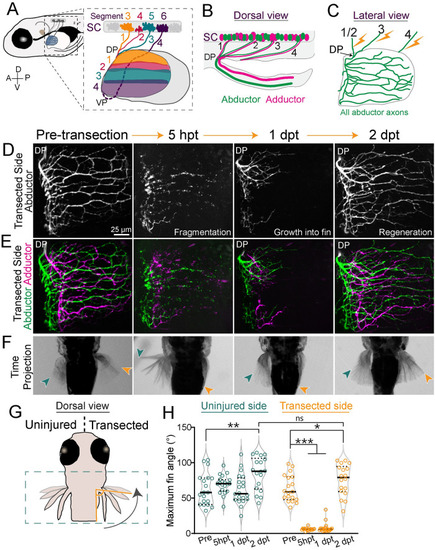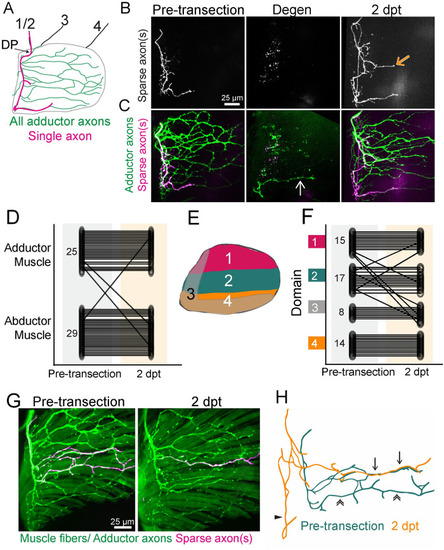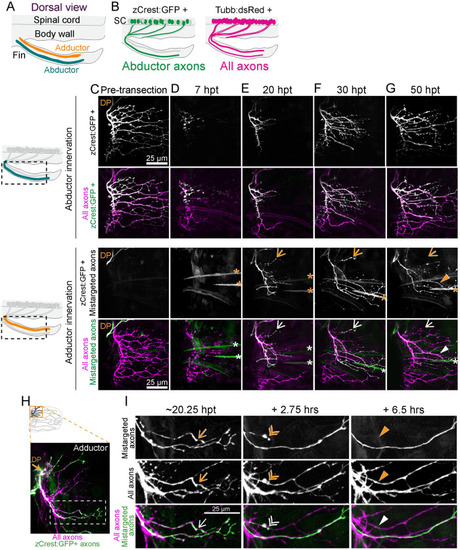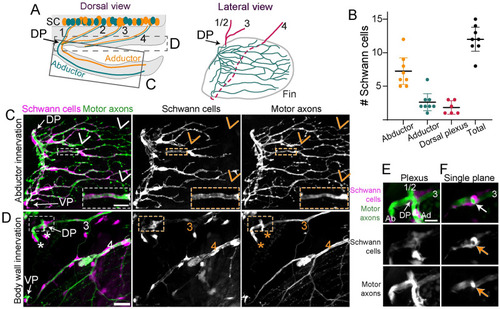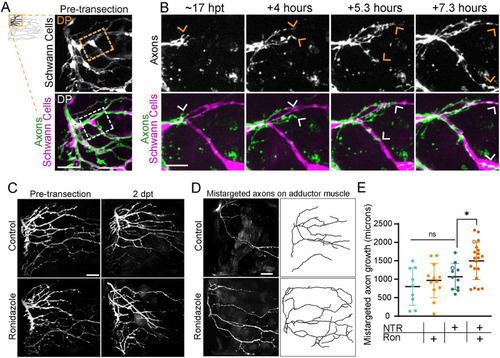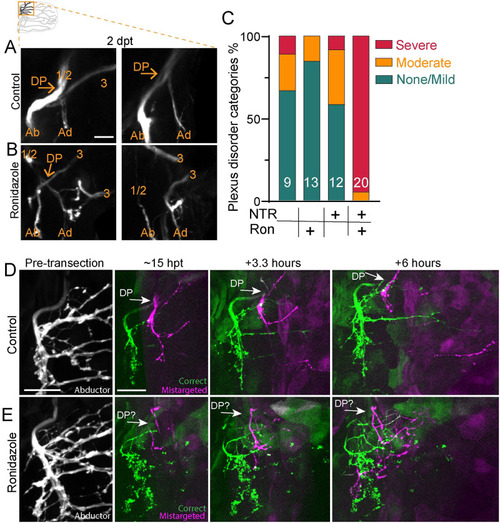- Title
-
Target-selective vertebrate motor axon regeneration depends on interaction with glial cells at a peripheral nerve plexus
- Authors
- Walker, L.J., Guevara, C., Kawakami, K., Granato, M.
- Source
- Full text @ PLoS Biol.
|
Pectoral fin motor axons regenerate robustly and reform functional synapses. (A) Schematic of a 5 dpf larval zebrafish. Inset shows motor pools from SC segments 3–6 that form pectoral fin nerves 1–4 in the body wall. Axons sort at a DP or VP and innervate the musculature of the pectoral fin topographically. Innervation domains are labeled 1–4 and shown in corresponding colors. (B) Dorsal view. Motor neurons in SC segments innervate either the abductor or adductor muscle. (C) Lateral view. Schematic of abductor innervation of the pectoral fin. Nerves were transected using a laser in the locations shown with the lightning bolts. (D, E) Images from the transected side of maximum projections of fin motor innervation labeled with |
|
Target-selective regeneration of motor axons. (A) Schematic of a lateral view of pectoral fin abductor muscle motor innervation. An example trajectory of a single axon is shown in magenta. DP labels dorsal plexus, motor nerves in the body wall are labeled 1–4. (B, C) A timecourse of sparsely labeled axon(s) showing the innervation pattern pre-transection, after axon degeneration, and at 2 dpt. Sparsely labeled axons are labeled in white (B) and magenta (C) and all adductor motor axons are labeled in green (C). The white arrow points to a fascicle that did not degenerate and the orange arrow points to ectopic growth during regeneration. (D) Quantification of the muscle localization of sparsely labeled axons pre-transection compared to where these labeled axons innervated after regeneration. Small numbers on pre-transection data represent |
|
Mistargeted axons are selectively retracted. (A) Dorsal view schematic labeling abductor and adductor musculature of the fin. (B) Schematic of zCrest:GFP+ motor neurons, which project to the abductor muscle and |
|
Schwann cells tightly associate with axons in the pectoral fin. (A) Schematic of a dorsal view of a larval zebrafish. In the SC, motor axons that sort at the DP to innervate the abductor (green) or adductor (orange) muscle are mixed within nerves 1–3. Nerve 4 axons sort at the VP (not labeled). The C and D boxes denote the regions included in the maximum projections shown in C and D. The lateral view shows the arrangement of nerves 1–4 in the body wall (magenta) and innervation in the fin (green) as it is shown in C and D. The dashed line indicates where nerve 4 grows in the body wall behind the fin. (B) Quantification of number of Schwann cells on the abductor or adductor muscle or associated with the plexus; |
|
Schwann cells instruct axonal regrowth. (A) Pre-transection maximum projection of axons labeled with |
|
Schwann cells organize axon regeneration through the plexus. (A) Maximum projection of the DP of |

